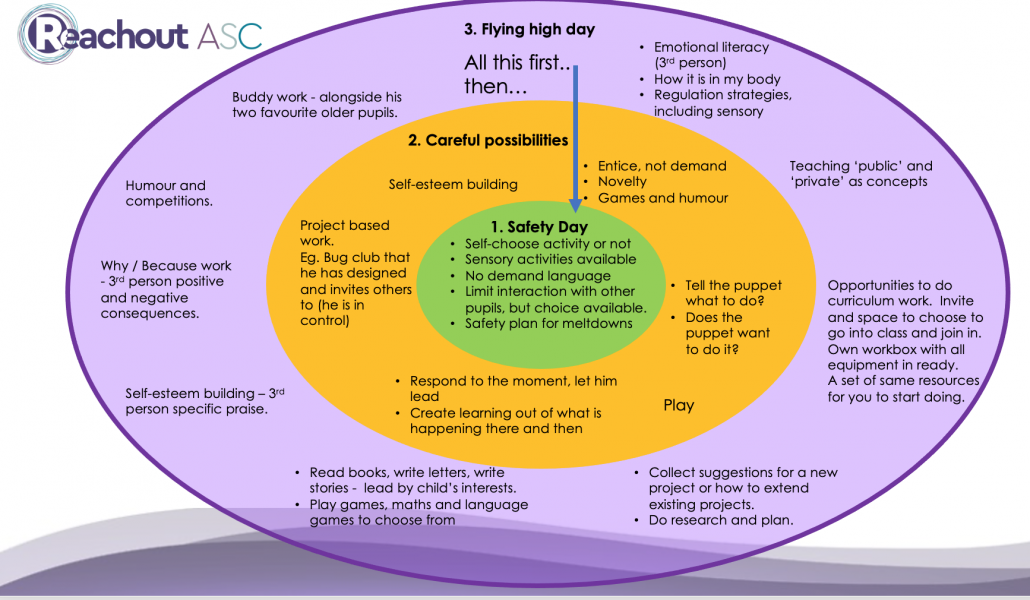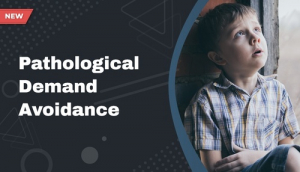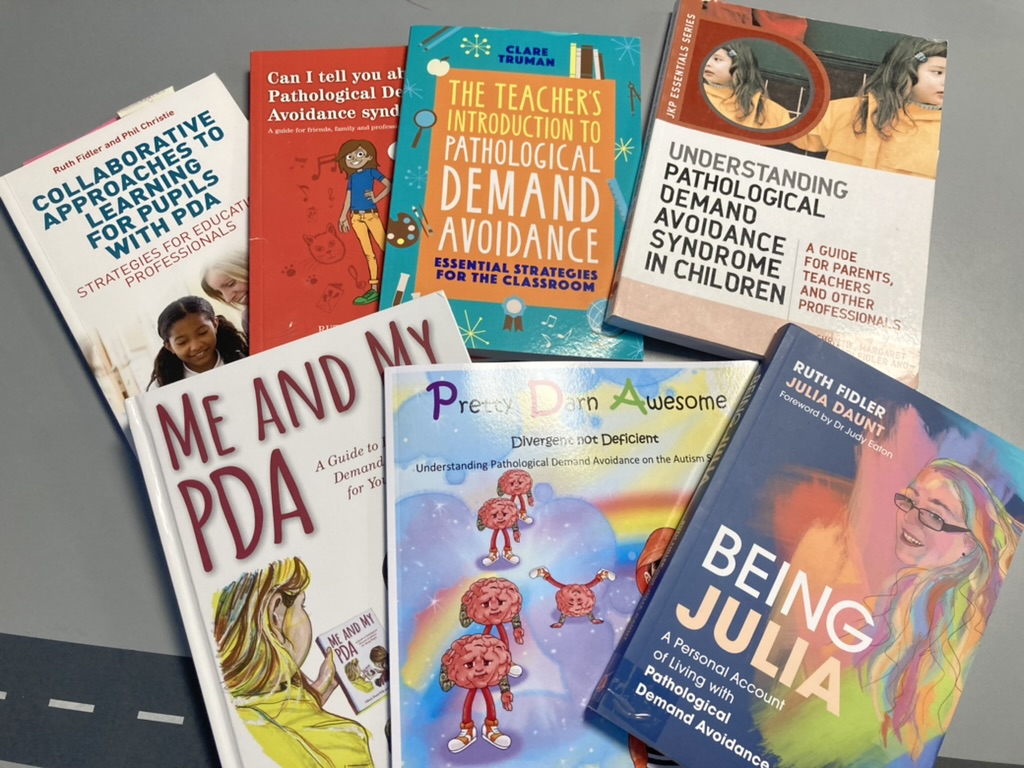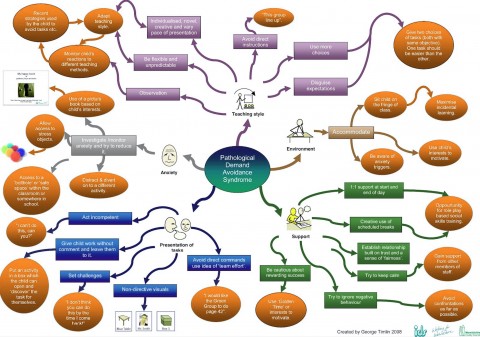Help for children with Pathological Demand Avoidance
Imagine that every day the simplest demands make you panic. Not just the demands from other people but the demands that you place on yourself, the things you know you should be doing.Like getting out of bed. Getting ready for the day. Getting out of the house. It’s not just feeling lethargic. It’s the crippling anxiety, the inability to make your body do the movements you know it should be able to, but today it just can’t. And what if some days you’re not as bad so you manage some things and everyone thinks you are faking it when on other days you are unable to function.The most important thing to understand about PDA is that it is a “can’t” not a “won’t”.
One of the best videos about Pathological Demand Avoidance is this by a young man called Isaac, who explains what it is like for him. Click here to watch it on Youtube.
Pathological Demand Avoidance (PDA) might just seem like just another ‘syndrome’ that labels children these days. Certainly, I remember being a little cynical when I first heard about it. But reading the information on the PDA Society website and the research done by Elizabeth Newson I began to see some key characteristics that explained the differences in particular children I worked with. All were diagnosed as Autistic, but the usual strategies weren’t working and their behaviour was extreme in response to normal demands, even things we knew they liked. Seeing the helpful approaches from the PDA Society https://www.pdasociety.org.uk/wp-content/uploads/2021/08/PDA-for-Teaching-professionals.pdf we tried some out and saw that they did indeed reduce the anxiety the child had and enabled them to engage with the activities we had prepared for them. We also found that they responded to less predictability than was usual for our autistic pupils, so every day we were using different strategies.
As with all autistic children it is first and foremost OUR responsibility to change. We might need to communicate in a different way, a way that puts less pressure on the child to do all the interpreting work. We can change the environment, it’s sensory demands, the sensory triggers and the demands of clutter or confusing places that overload an autistic / PDA profile child. We need to look at our own arousal levels, how we respond to their ‘can’t’ and examine whether we can handle the situations we find difficult in a better way.
It is so important to understand the communication of the autistic child and that may be through demand avoidant behaviour. We need to listen and work out together how to reduce stress on them and make successful ways of accessing life. Sometimes we need to realise they are traumatised and need time first to recover and this means backing off from most demands, letting them recover at their own pace and then slowly reintroduce every day activities. It means giving the child a lot of control over what they do and when. Of course you may not think this is a good way to treat a child. But believe me, a child with autism and PDA profile NEEDS this. They are not ‘attention seeking’ but trying to manage in a very fearful and overwhelming world. This is where many children with a PDA profile end up not attending school for some time. They end up being traumatised, unable to cope with the millions of daily demands and the anxiety caused makes them unable to attend school at all. We have worked with a number of PDA profile children who have been moved to a specialist provision or home schooled (with education still provided by the LA).
Long term, children with PDA can learn to manage life and the demands they can respond to. It can be a worry for parents and teachers and many of them have asked, “but what about learning to do this or that?” (especially school work and keeping up). I can only say that if you do not get the conditions and support right for managing demands and learning, then it won’t happen, you will just increase the stress. We have worked with children with a PDA profile and done lots of learning with them – their intelligence is usually not the issue. Once they feel they CAN do something, they can do it. It may mean that education takes them longer, that they stay at home a few more years before they feel confident to become independent, and they may need a support system that adapts with them into adulthood. But we know from adults (Such as Harry Thompson (You Tube) and Sally Cat PDA) that PDA can be improved and people can achieve things.
The PDA Society have this handy booklet explaining what PDA is https://www.pdasociety.org.uk/wp-content/uploads/2021/04/What-is-PDA-booklet-website-v2.1.pdf
There is some debate as to whether PDA is a suitable diagnosis for every child who displays these demand avoidant behaviours. However, whether it is purely PDA or autism with extreme anxiety, I have found that the helpful apporaches can make a huge difference. The key seems to be the understanding and skill of the people supporting the child. You have to be calm at all times, flexible but ready to respond to anything, have a sense of humour and be skilled at reading a situation, a mood, an early response and pulling the most suitable strategy ‘out of your bag’ at a moment’s notice. The first bit of advice in the PDA approaches are to work on a flexible plan. Plan A is the essential demands that keep the child safe and healthy, and a Plan A day is when the child is overwhelmed and ‘can’t’ do things they might on other days. Plan B introduces some simple demands that the child can do on a better day. Plan C is all the things you might get done on a good day. We have found this approach provides an excellent way for parents, the child and the teachers to communicate and know what to expect each day. The plans can change every hour, but when everyone is working on the same plan at the same time, the child feels safe and supported.
This is our version that we did with a school last year.

The approaches share a lot of day to day responsive activities and language that can really help. Looking towards growing up and learning to live with PDA (it can become more manageable) we suggest working with all children to help them understand stress and anxiety in the long term. Here is my blog “8 ways to support autistic pupils manage anxiety“.
I do think it would be really useful for all clinicians to be able to diagnose a PDA Profile. The problem is that it isn’t in the current diagnostic manuals. The National Autistic Society has recognised it as part of the autistic spectrum and some clinicians are diagnosing it, but there is a lot of debate whether it is actually part of the autistic spectrum or a separate diagnosis. There are some linking it to ADHD. The debate continues whilst we search for the best ways to support our young people. I am coming across more and more children being given the diagnosis and it does help them, their parents and teachers begin to understand that they’re not ‘doing it on purpose‘ but that there is a reason and there are things we can do to help that might be quite different from what we’ve already tried. Especially if the usual autism strategies aren’t working.
I now know so much more about PDA and have developed my experience as more children that we support are recognised with this condition, often because we have brought it to the attention of parents and teachers. I can provide a training day on PDA for your school or service. We have an online course you can access for just £24 on The Ability Bridge which is our online training platform – and the course is CPD accredited.

https://www.schudio.tv/courses/pathological-demand-avoidance
We explore anxiety and its effects and look at the core characteristics of a PDA Profile and how to recognise them. We then look at the helpful approaches suggested, discuss case studies and our own experiences and build a profile of the child that you know so you have a plan to take away with you. If you’d like this training at your school, college, service, parents group or charity, please get in touch by clicking here.
Resources:
Get teacher resources, including the mind map above from the PDA Society website.
Steph’s Two Girls blog is a lovely blog from a parent of two girls with PDA. She shares stories from other families and lots of good advice.
PDA Parenting blog is another good blog full of stories and resources that support parents.
https://positivepda.com/nicola-reekie/ – lots of great conference talks on PDA




